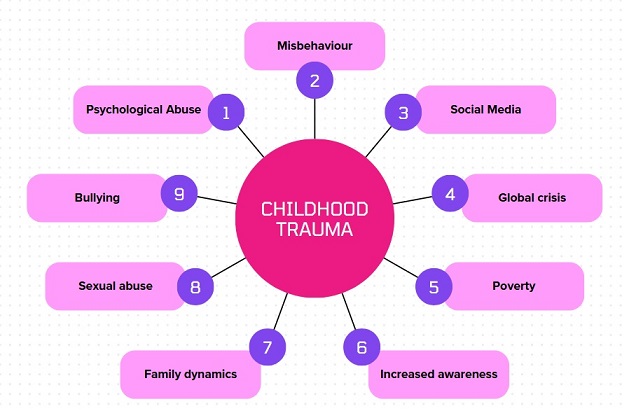
Shoulder dystocia is a rare but serious obstetric complication and emergency that could occur during delivery when the baby’s anterior shoulder becomes lodged behind the maternal pubic bone after the head has been delivered. This complication requires immediate and skilled intervention to prevent severe outcomes for both the mother and the baby. While much of the discussion surrounding shoulder dystocia often focuses on neonatal complications, it is equally crucial to address the maternal consequences. These complications can range from physical trauma to significant psychological impacts, all of which can have lasting effects on maternal health and well-being.
Understanding Shoulder Dystocia
To comprehend the maternal complications, it is essential to understand the dynamics of shoulder dystocia. The condition is typically unpredictable and is associated with several risk factors, including fetal macrosomia (large baby), maternal diabetes, obesity, prolonged labor, and operative vaginal delivery. Despite these associations, shoulder dystocia can occur without any identifiable risk factors, making it a challenge to anticipate and prevent.
The management of shoulder dystocia involves specific maneuvers to dislodge the baby’s shoulder and facilitate delivery. These maneuvers, while lifesaving, can contribute to maternal injury due to the physical forces exerted during the process.
Physical Complications
1. Perineal Trauma
One of the most common maternal complications of shoulder dystocia is perineal trauma, including severe perineal tears. These tears are classified into four degrees:
- First-degree tears involve the vaginal mucosa and perineal skin.
- Second-degree tears extend into the perineal muscles.
- Third-degree tears involve the anal sphincter.
- Fourth-degree tears extend through the anal sphincter into the rectal mucosa.
Shoulder dystocia increases the risk of third- and fourth-degree tears due to the excessive stretching and manipulation of the maternal tissues during delivery. Such injuries can result in prolonged pain, incontinence, and sexual dysfunction, significantly affecting a woman’s quality of life.
2. Postpartum Hemorrhage (PPH)
Postpartum hemorrhage is a significant complication associated with shoulder dystocia. The excessive traction and manipulation during delivery can cause uterine atony, cervical tears, or vaginal lacerations, all of which contribute to blood loss. Severe PPH may necessitate blood transfusions, surgical interventions, or even hysterectomy in extreme cases.
3. Uterine Rupture
Although rare, uterine rupture is a serious complication that can occur during shoulder dystocia, especially in cases involving a previous cesarean section or uterine surgery. The excessive force required to deliver the baby can lead to a rupture, posing life-threatening risks to both the mother and the baby.
4. Pelvic Organ Prolapse
The trauma associated with shoulder dystocia and the subsequent weakening of pelvic floor muscles can increase the risk of pelvic organ prolapse. This condition involves the descent of pelvic organs such as the bladder, uterus, or rectum into the vaginal canal, leading to symptoms like pelvic pressure, urinary incontinence, and difficulties with bowel movements.
Psychological Complications
The impact of shoulder dystocia on maternal mental health should not be underestimated. The sudden and often traumatic nature of the event can leave lasting psychological scars.
1. Post-Traumatic Stress Disorder (PTSD)
Experiencing a shoulder dystocia delivery can be deeply distressing for mothers, particularly if the event involved significant physical trauma, a prolonged emergency, or concerns about the baby’s well-being. PTSD symptoms, including flashbacks, nightmares, and anxiety, are not uncommon in these cases.
2. Postpartum Depression
The physical and emotional toll of shoulder dystocia can contribute to postpartum depression. Factors such as prolonged recovery from physical injuries, feelings of guilt or failure, and challenges in bonding with the baby can exacerbate depressive symptoms.
Long-Term Health Implications
The long-term health consequences of maternal complications from shoulder dystocia extend beyond the immediate postpartum period.
1. Chronic Pain
Perineal trauma and pelvic floor injuries can result in chronic pain that persists for months or even years after delivery. This pain can interfere with daily activities, intimacy, and overall quality of life.
2. Reproductive Health Concerns
Severe complications like uterine rupture or extensive pelvic trauma may impact future pregnancies. Women with a history of shoulder dystocia may face increased risks in subsequent deliveries, often necessitating a planned cesarean section to prevent recurrence.
3. Social and Emotional Impact
The physical and psychological challenges following shoulder dystocia can strain relationships and social interactions. Women may experience feelings of isolation or inadequacy, especially if they struggle to discuss their experiences with others.
Prevention and Management
While shoulder dystocia cannot always be prevented, certain measures can reduce the risk and mitigate maternal complications:
1. Risk Assessment
Healthcare providers should identify and closely monitor pregnancies with risk factors such as fetal macrosomia, maternal diabetes, or previous shoulder dystocia. Early intervention and delivery planning can help minimize risks.
2. Skilled Management
Effective management of shoulder dystocia requires a multidisciplinary team trained in the use of maneuvers such as the McRoberts maneuver, suprapubic pressure, and rotational techniques. Prompt and skilled intervention can prevent or reduce maternal and neonatal injuries.
3. Postpartum Care
Comprehensive postpartum care is crucial for mothers who experience shoulder dystocia. This care should address both physical recovery and psychological well-being, including pain management, pelvic floor therapy, counseling, and support groups.
Addressing Unmet Needs in Maternal Care
Despite advances in obstetric care, there remain gaps in addressing the holistic needs of mothers who experience complications like shoulder dystocia. Enhanced training for healthcare professionals on recognizing and managing maternal trauma can improve outcomes. Moreover, creating a culture of open communication within the healthcare setting can empower mothers to voice their concerns and access appropriate care.
1. Role of Postnatal Education
Educating mothers about the potential complications and available resources can play a vital role in improving recovery. Information on perineal care, pelvic floor exercises, and recognizing signs of psychological distress can facilitate early intervention and reduce long-term impacts.
2. Importance of Partner and Family Support
The involvement of partners and family members in the recovery process can provide emotional support and alleviate feelings of isolation. Encouraging open discussions about the experience can help normalize the challenges and foster a supportive environment.
3. Innovations in Obstetric Practices
Advancements in obstetric practices and technologies hold promise for reducing the incidence and impact of shoulder dystocia. For example, simulation-based training for healthcare teams can enhance preparedness and confidence in managing obstetric emergencies. Additionally, ongoing research into predictive tools and preventive strategies can help identify at-risk pregnancies more accurately.
4. Promoting Research and Collaboration
Investing in research to understand the maternal consequences of shoulder dystocia is crucial for developing targeted interventions. Collaborative efforts among obstetricians, midwives, psychologists, and physiotherapists can create comprehensive care pathways that address both physical and emotional recovery.
Conclusion
Shoulder dystocia is a challenging obstetric emergency with significant maternal implications. While advancements in obstetric care have improved outcomes, the physical, psychological, and long-term health effects on mothers remain substantial. Recognizing and addressing these complications is essential to ensure holistic maternal care and recovery. By prioritizing prevention, skilled management, and comprehensive postpartum support, healthcare providers can help mitigate the impact of shoulder dystocia and promote better health outcomes for mothers. Future efforts should focus on integrating innovative practices, fostering research, and enhancing education to empower mothers and improve their overall well-being.
Legal disclaimer:
This is a general article meant for information purpose to raise awareness about the issue and one should not take it as medical advice but consult a proper medical person if any such issues are faced.

